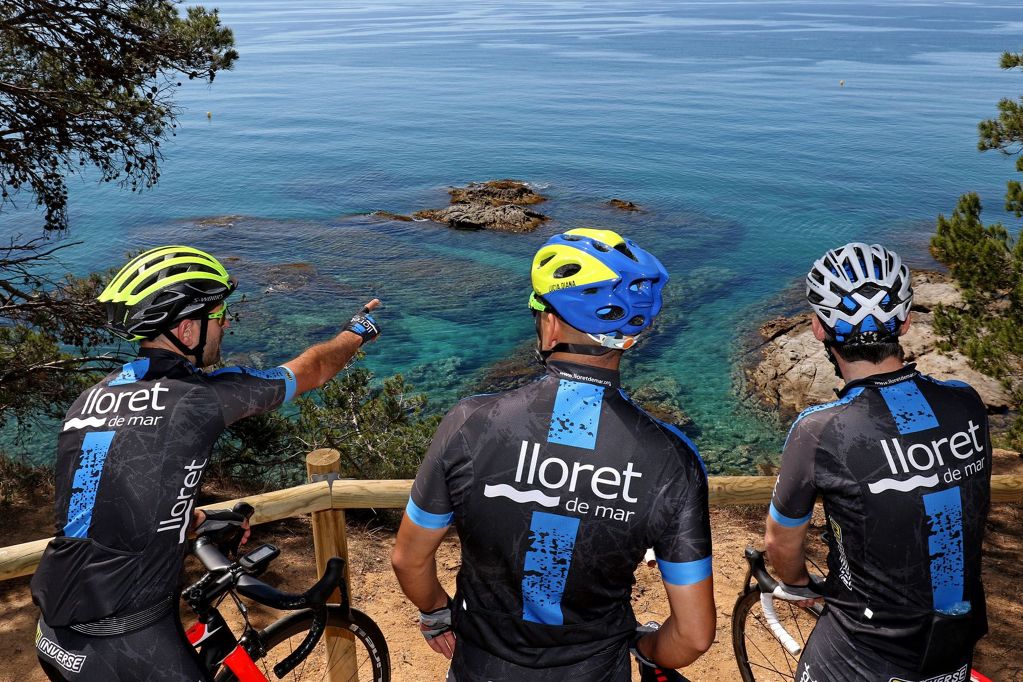
Lloret de Mar - Sant Grau – Llagostera – Tossa - Lloret de Mar
Lloret de Mar - Sant Grau – Llagostera – Tossa - Lloret de Mar
 Distance:
54 km
Distance:
54 km
 Elevation gain:
650 m
Elevation gain:
650 m
 Max. Elevation:
411 m
Max. Elevation:
411 m
Water points
- Tossa de Mar
- Llagostera

|
MOUNTAIN PASSES |
CATEGORY |
DISTANCE |
ELEV. CHANGE |
AV. GRADE % |
MAX. GRADE % |
||
|
Alt de Sant Grau (Cadiretes) |
2 |
7 KM |
4,34 MI |
400 M |
1312 FT |
5,5% |
14% |
|
SECTIONS WITH TRAFFIC DENSITY / ROAD SURFACE DEFECTS |
HIGH DENSITY |
MEDIUM DENSITY |
LOW DENSITY |
|
Lloret - Sant Grau |

Secondary road |
||
|
Sant Grau Llagostera |

Secondary road |
||
|
Llagostera - Tossa |

Secondary road |
||
|
Tossa - Lloret |

Urban and interurban sections |
Departing from the Central Tourist Office of Lloret de Mar, located in Carrer de les Alegries, 3, we follow the east exit from the city, crossing Lloret, and take the GI-682 road in the direction of Tossa de Mar.
We cross Tossa de Mar and continue along the same road in the direction of Sant Feliu de Guíxols. This is the start point of one of Europe’s best coastal roads for cycling. It offers stunning sea views with the towering cliffs and spectacular coves of the Costa Brava, along with a series of climbs and descents that will warm up your legs if you ride with intensity.
At kilometre 21 we come to the turn-off for the Chapel of Sant Grau and Puig de Cadiretes, a mountain in the heart of the Ardenya Massif. The Sant Grau Pass begins here. With wonderful views of the coast, it’s a demanding climb with gradients of up to 14% in some places.
Once we’ve climbed the pass, we begin a rapid descent down to Llagostera, where we take the C-235-G1 road in the direction of Tossa. Once we reach Tossa de Mar we continue along the GI-682 road that leads us back to Lloret, the start and end point of the route.
It’s important to bear in mind that during the high summer season the GI-682 and C-235-G1 roads become the main access roads to beaches, with dense traffic, and should not be considered secondary roads at this time of year. You should avoid weekends from the second fortnight of June to the second fortnight of September, and it’s best to avoid the entire month of August.
Points of interest
Tossa de Mar: ancient fishing village, easily recognisable thanks to its silhouette featuring the tower of the mediaeval walled enclosure. A town with an aura of glamour ever since Pandora and the Flying Dutchman was filmed there in 1951, starring Ava Gardner, James Mason and the bullfighter Mario Cabré.
Sant Grau d’Ardenya: large church in the neo-Romanesque style, attached to a building with the appearance of a traditional Catalan farmhouse. The road to the chapel offers one of the area’s most stunning views of the Mediterranean Sea.
Ardenya Massif: massif that falls away steeply, forming cliffs and coves along the coast between Sant Feliu de Guíxols and Tossa de Mar. This impressive, wild landscape inspired the local journalist and poet Ferran Agulló to christen this stretch of coastline the “Costa Brava”.